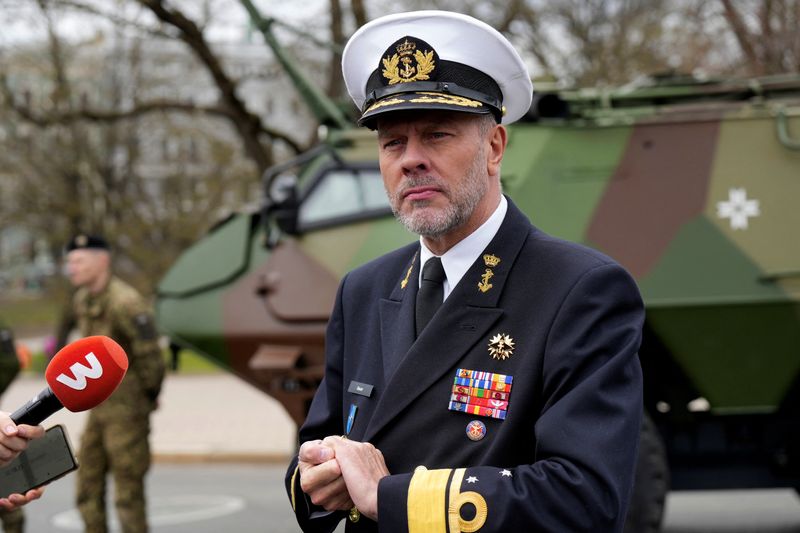By Sabine Siebold
BERLIN (Reuters) -NATO aims to bring forward a decision on new targets for weapons and troop numbers to this summer, a top military official said on Monday, referring to the alliance's biggest overhaul since the Cold War as it faces what it sees as a growing threat from Russia.
The Western military and political alliance has been under pressure not only in the wake of Russia's 2022 invasion of Ukraine but also internally, with U.S. President-elect Donald Trump calling on its members to spend much more on defence.
NATO defence ministers will seek to reach a deal on new capability targets a few weeks before their leaders meet in The Hague on June 24-26, the chief of the bloc's Military Committee, Dutch Admiral Rob Bauer, told Reuters in an interview.
"We're going to look for an agreement before the summit in the Hague," Bauer said, "to make sure that if there are any remaining problems, then that can be solved, and if necessary, by the leaders."
In 2023, NATO leaders agreed on thousands of pages of secret defence plans that detail for the first time since the Cold War how the alliance would respond to a Russian attack.
However, the documents exposed significant shortages in air defences and long-range missiles, troop numbers, ammunition, logistical headaches and a lack of secure digital communications on the battlefield.
These gaps are meant to be addressed with the new capability targets that were originally expected to be agreed on at a NATO defence ministers' meeting in the autumn of 2025.
The summit in The Hague will also discuss hiking NATO's existing military spending target of 2% of national GDP, with 3% being floated by some experts as one potential new target. Trump, who returns to the White House on Jan. 20, recently urged a 5% goal.
Bauer declined to specify a figure but said the idea of bringing its capability targets forward was "to make sure that everybody understands better the connection to the money" since the needs were made clear through the new defence plans.
"The delta is what you need to buy, and that is what the new capability targets will look at," the admiral said. "So basically it will help to make people understand why we need more than 2%."
During the Cold War, NATO allies on average spent 3%-6% of their national GDP on their militaries, according to Bauer.

"If we would have continued spending (as an alliance) what we spent in the early 90s, and that was at a level of 3%, we would have spent 8.6 trillion dollars more than we have now spent," Bauer said.
"That's basically the peace dividend that we now have to fund."